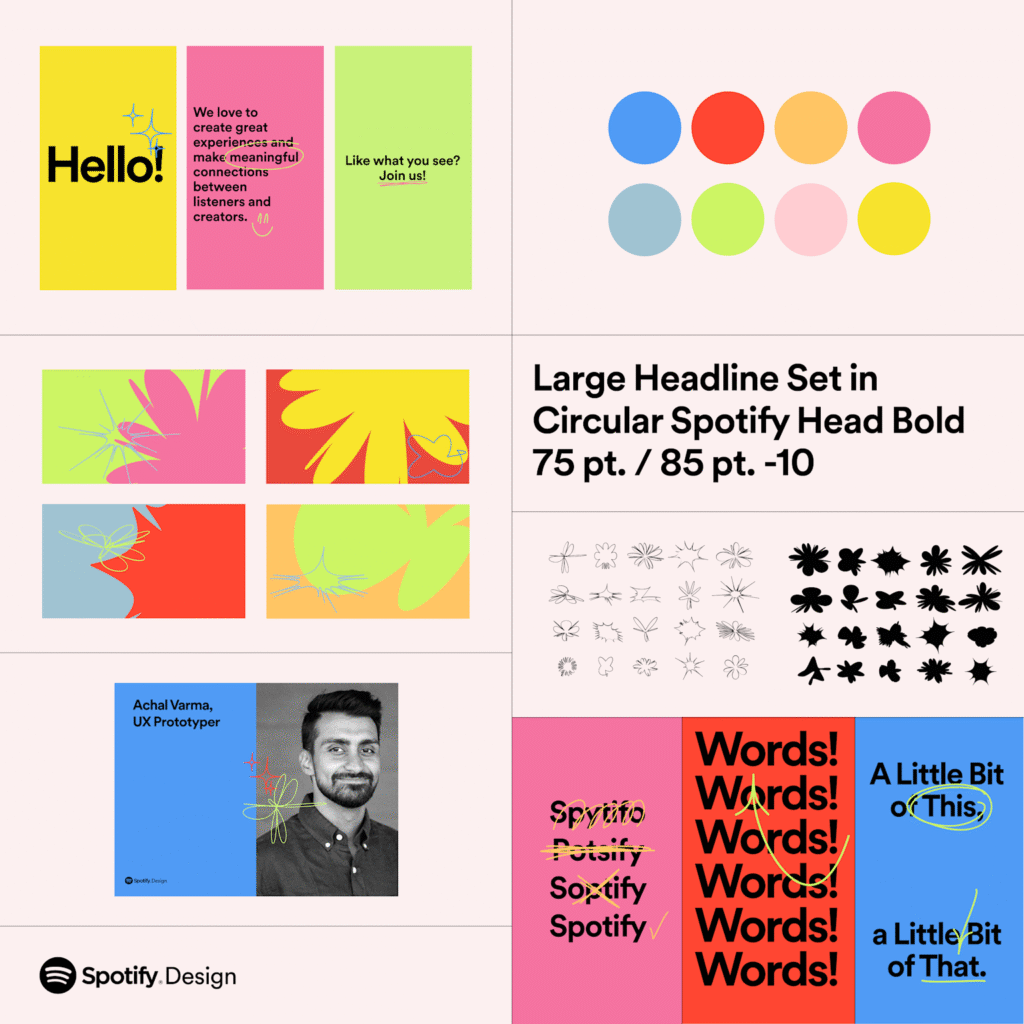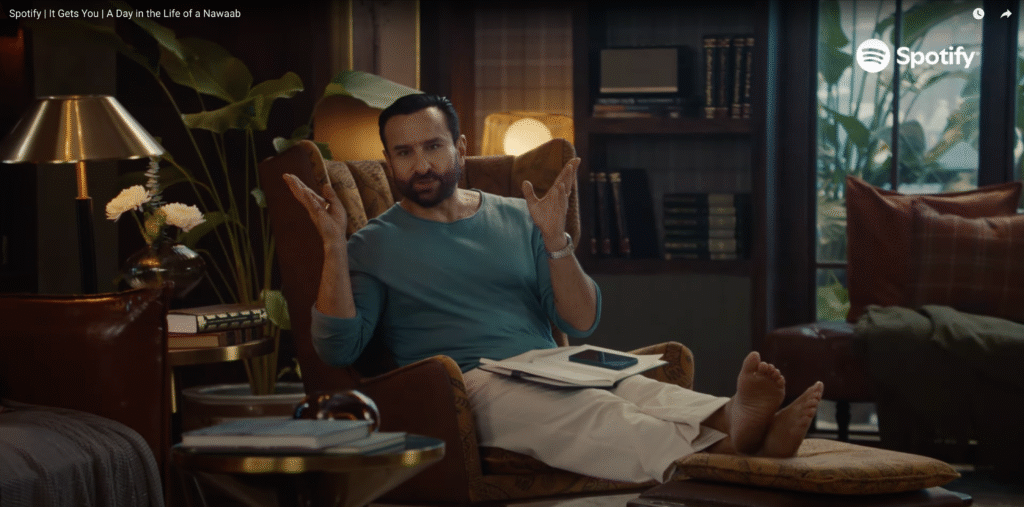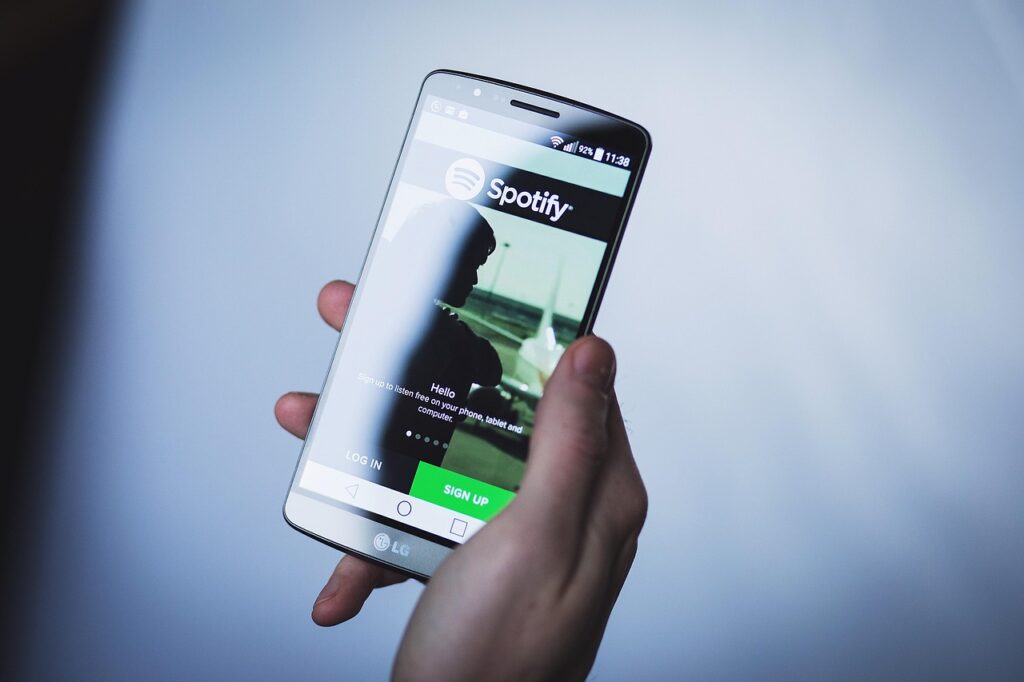Spotify India’s latest celebrity campaign brings together Kareena Kapoor and Saif Ali Khan in a calculated charm offensive. The result? A polished blend of Bollywood nostalgia and streaming ambition that feels both familiar and carefully orchestrated.

But does it strike the right chord with audiences? Or does it echo the same tired celebrity endorsement playbook we’ve critiqued before—much like Amazon’s generic festival approach or the smartphone marketing chaos dominating September 2025?
Let’s dissect this musical matrimony through multiple professional perspectives—examining what works, what doesn’t, and what modern marketing strategies could have elevated this campaign beyond comfortable celebrity comfort food.
The Campaign Decoded: Beyond Star Power

The two-film approach works smartly. “Bebo Spills the Tea” and “A Day in the Life of a Nawaab” use the couple’s real chemistry. At the same time, they position Spotify as the algorithm that truly gets you.
The tagline “No one knows you like Spotify” isn’t revolutionary. But it’s executed with self-awareness. This feels refreshing in a market flooded with over-the-top brand promises.
Here’s the campaign’s genius: it focuses on intimate, everyday moments. Instead of grand musical scenes, we see Saif’s embarrassing playlists. We watch Kareena make assumptions about his taste. These moments feel genuinely relatable.
This approach aligns with Spotify’s strategy of celebrating India’s musical connection. It also acknowledges a truth: our actual listening habits are delightfully messy.
Digital Marketing Perspective: Smart but Safe
Performance-wise, this campaign shows textbook audience targeting. It reaches the 25-45 demographic who grew up with this couple’s romance. Simultaneously, it appeals to younger audiences discovering them fresh.

The multilingual strategy extends beyond Hindi to regional languages. This shows Spotify has learned from its five-year Indian journey.
What’s Working Well
- Authenticity beats aspiration: The campaign admits we don’t always listen to what we claim
- Platform-first storytelling: Each film feels native to social media
- Cultural intelligence: The “Nawab” persona taps into established shorthand for refined taste
Where It Stumbles
The execution feels disappointingly predictable. Celebrity couples discussing preferences? Every brand uses this playbook. From cars to insurance.
Spotify’s twist reveals the gap between perception and reality. This adds depth. But it’s hardly groundbreaking.
The campaign misses chances for deeper data storytelling. Spotify’s real advantage lies in algorithmic insights. Yet these ads barely scratch the surface of what makes their engine superior.
UX Writing Perspective: Natural Dialogue, Missed Opportunities
The dialogue feels authentic. This is rare in celebrity advertising. Scripts usually sound like corporate speak filtered through star personas.
Kareena’s “I know my Saif” opening creates immediate intimacy. Saif’s “Lagta hai tattoo thoda little reh gaya” delivers comedy without losing authenticity.
Copy Strengths

- Voice consistency: Both celebrities sound like themselves, not brand ambassadors
- Natural flow: The banter feels unforced and genuinely playful
- Cultural accuracy: The Hindi-English mix reflects how the target audience actually speaks
UX Writing Gaps
The campaign lacks clear next steps. Beyond the end tagline, there’s minimal guidance on what users should do.
The copy doesn’t use micro-moments effectively. These are specific instances where Spotify’s features could solve real problems.
More importantly, the scripts don’t educate users about benefits. They entertain but miss chances to explain why Spotify’s Mix feature matters. Or why day-based playlists improve daily life.
AI Evangelist Perspective: Smart Algorithm Positioning
Here’s where the campaign truly shines. It personifies Spotify as the entity that “gets you” better than your spouse. This successfully humanises algorithmic intelligence.
This positioning matters. Indian consumers still approach AI-driven recommendations with doubt.
The “Day in the Life of a Nawaab” execution excels at showing contextual music curation.
It demonstrates how Spotify adapts to different moments. From morning reflection to brunch prep. This illustrates machine learning benefits without technical jargon.
AI Messaging Wins

- Makes algorithm-driven personalisation feel warm, not clinical
- Shows practical AI benefits through lifestyle moments
- Positions technology as improving, not replacing, human connection
Missed AI Opportunities
The campaign could showcase more sophisticated capabilities. Perhaps highlighting how Spotify learns from listening patterns across moods, times, or weather.
The focus stays surface-level. Spotify’s AI could support much deeper storytelling.
End User Perspective: Charming but Limited

For Spotify’s target audience, this campaign delivers comfortable entertainment. It doesn’t demand emotional investment. The celebrity chemistry works. The humour lands. Brand integration feels organic, not intrusive.
User Experience Strengths
- Easy consumption: Low cognitive load across platforms
- Social media ready: Moments designed for sharing
- Memory boost: Celebrity association aids recall
User Journey Gaps
The campaign ignores real user problems. Indian consumers struggle with subscription models. They need help with playlist discovery. They don’t understand premium benefits.
These practical concerns get no attention. Instead, we get lifestyle aspiration.
The campaign also ignores community features. Spotify’s social aspects could differentiate it from competitors. Playlist sharing and friend-based discovery get zero attention.
The Alternative Approach: What I’d Do Differently
Instead of celebrity lifestyle content, I’d focus on ‘musical moments of truth’. Those split seconds when the perfect song appears exactly when needed.
Picture Saif discovering a forgotten ghazal during stress. Or Kareena finding the ideal workout playlist matching her exact mood.
The creative would centre on Spotify as emotional archaeology. Digging up songs that unlock memories, emotions, or energy users didn’t know they needed. This showcases AI whilst creating relatable scenarios.

From a content strategy angle, I’d build micro-campaigns around specific uses:
- Study playlists that boost focus
- Commute companions that energise
- Workout motivation that pushes limits
- Dinner party ambience that impresses
Each would demonstrate Spotify’s contextual intelligence. They’d build habits, not just awareness.
Competent but Not Courageous
This campaign achieves its main goal. It maintains Spotify’s cultural relevance whilst reinforcing personalisation promises.
Celebrity chemistry works. Production values are solid. Brand integration feels authentic.
But it represents wasted potential. Music streaming is becoming commoditised. Spotify needed bolder storytelling highlighting genuine advantages.
The campaign plays safe when the brand’s AI capabilities deserved adventurous creative treatment. Social features and cultural curation strategies got shortchanged.
Key Takeaways by Professional Role
Digital marketers can learn about celebrity partnership authenticity and cultural code usage.
UX writers see conversational tone mastery. But also the importance of actionable guidance.
AI evangelists witness successful algorithm humanisation. But recognise it could extend much deeper.
Bottom line: “It Gets You” captures Spotify’s brand essence effectively. But it doesn’t push boundaries like truly memorable campaigns should.
It’s competent comfort food in an industry that increasingly rewards creative courage.
